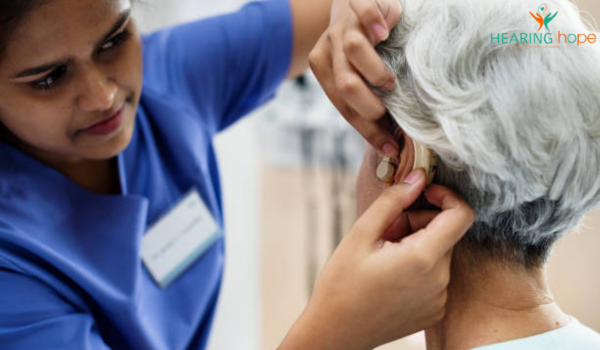
How to Remove Water from Ear: Easy Tips and Effective Solutions
Have you ever experienced the uncomfortable sensation of water stuck in your ear after swimming or showering? While it might seem minor, trapped water can lead to serious issues like ear infections, discomfort, or temporary hearing loss if left untreated. Understanding how to remove water from ears effectively is essential for maintaining ear health and avoiding complications.
This guide will share simple and practical solutions for safely removing water from your ears. From tilting your head to using over-the-counter ear drops or applying a warm compress, there are many effective techniques to try. We’ll also provide prevention tips to help you avoid this issue in the future.
Whether you’re looking for quick remedies or seeking expert advice, this guide covers everything you need to know about keeping your ears healthy and water-free. Stay tuned for actionable insights to ensure lasting ear health!
Why Does Water Get Trapped in the Ears?
Trapped water in ear is a common issue caused by several factors:
- Narrow Ear Canals: Some individuals have naturally narrow ear canals that make it easier for water to stay trapped.
- Excessive Earwax: Built-up earwax can block water from flowing out of the ear.
- Swimming and Bathing: Submerging your head in water often results in water getting into the ears.
Understanding why water gets trapped can help you take proactive steps to prevent it.
Risks of Trapped Water in the Ear
Water stuck in ear for days may lead to discomfort, but the risks go beyond that:
- Swimmer’s Ear: Prolonged water exposure can lead to bacterial growth, causing an infection known as swimmer’s ear. Symptoms include itching, redness, and pain.
- Hearing Issues: Temporary muffled hearing can occur due to the blockage.
- Chronic Infections: If left untreated, repeated infections can damage the ear canal or eardrum, potentially leading to hearing loss.
Read Also: Comparing Hearing Aid Prices
How to Get Water Out of Ear: Step-by-Step Techniques
Tilt and Shake Method
This simple technique uses gravity to help drain water.
Steps:
- Lean your head to the side, positioning the affected ear downward.
- Gently tug your earlobe to open the ear canal.
- Shake your head slightly to encourage water to flow out.
This method is particularly effective for water trapped near the outer ear.
Use Over-the-Counter Ear Drops
Specialized ear drops can help evaporate trapped water.
- Best For: Narrow canals or excessive earwax.
Steps:
- Turn your head so the affected ear is angled upward.
- Administer 2-3 drops of glycerin or isopropyl alcohol-based ear drops.
- Maintain your head in a tilted position for a few minutes to let the drops take effect.
- Then, tilt your head in the opposite direction to allow the water to drain out.
Always follow the instructions on the ear drop packaging for best results.
Perform the Valsalva Maneuver
This technique helps equalize pressure in the ear.
Steps:
- Take a deep breath and pinch your nostrils closed.
- Gently exhale with your mouth closed to build pressure.
- Repeat this process until you feel relief.
Caution: Avoid blowing too hard to prevent damage to the eardrum.
Apply a Warm Compress
A warm compress can loosen trapped water and promote drainage.
Steps:
- Dip a clean cloth in warm water and squeeze out the excess moisture.
- Hold the cloth over the affected ear for 5-10 minutes.
- Tilt your head to the side to drain the water.
This method is particularly soothing the discomfort caused by trapped water.
Hair Dryer Method
Evaporating water with a hair dryer is a quick and effective method.
Steps:
- Set your hair dryer to the lowest heat and power setting.
- Hold it about 12 inches away from your ear.
- Gently blow warm air into the ear canal to dry the trapped water.
Caution: Avoid using high heat to prevent burns or damage.
Create a Vacuum with Your Palm
Using your palm to create a vacuum can help pull water out.
Steps:
- Cup your hand over the affected ear, ensuring a tight seal.
- Gently push and release your hand to create suction.
- Repeat until the water drains.
Prevention Tips to Avoid Water in Ear
Preventing water from getting trapped in your ears is always better than treating it later.
| Do’s | Don’t |
| Use swim plugs or earplugs. | Insert cotton swabs into your ear. |
| Dry ears thoroughly after water. | Use sharp objects to clean your ears. |
| Tilt your head to drain water. | Ignore persistent ear discomfort. |
For more preventive care, visit the Hearing Test in Delhi page to learn about advanced ear health solutions.
When to Seek Medical Help
Sometimes, home remedies aren’t enough. Seek professional help if you experience:
- Persistent Ear Pain: Continuous pain could indicate an infection.
- Muffled Hearing: If your hearing doesn’t return to normal.
- Signs of Infection: Redness, swelling, or discharge from the ear.
Hearing Aid Centre in Delhi offers expert consultation and treatments for all ear-related issues.
Read: Which Cell Keeps your Hearing Aids Running
Conclusion
Water trapped in the ear can be an annoying and potentially harmful issue, but with the proper techniques, it’s easy to manage. Knowing how to remove water from ears effectively is essential for preventing discomfort and complications. Whether you try the tilt-and-shake method or opt for professional ear drops, the key is to act quickly and safely.
For persistent problems, it’s essential to seek professional help. Don’t hesitate to visit the Hearing Aid Centre in Delhi or book a Hearing Test in Delhi to ensure your ears remain in excellent condition.
With these tips and a proactive approach to prevention, you can enjoy a life free from ear discomfort. Take care of your ears—they’re the gateway to a world of sound!
Frequently Asked Questions
If home remedies like tilting your head, using ear drops, or the Valsalva don’t work, manoeuvre it’s best to consult a healthcare professional. Persistent trapped water can lead to infections or complications, so timely intervention is essential.
No, using cotton swabs can push the water deeper into the ear canal or damage the eardrum. It’s safer to use recommended techniques such as tilting your head, using ear drops, or creating a vacuum with your palm.
Trapped water may cause temporary hearing loss due to blockage in the ear canal. However, if left untreated and leading to infections, it could cause more severe or long-term hearing issues.
You can prevent water from getting trapped by wearing waterproof earplugs, a swim cap, or custom-moulded earplugs designed for swimmers. Additionally, drying your ears thoroughly after swimming can reduce the risk of trapped water.
Dr. Harshi, is an accomplished Audiologist with extensive expertise in treating individuals with hearing impairments.

